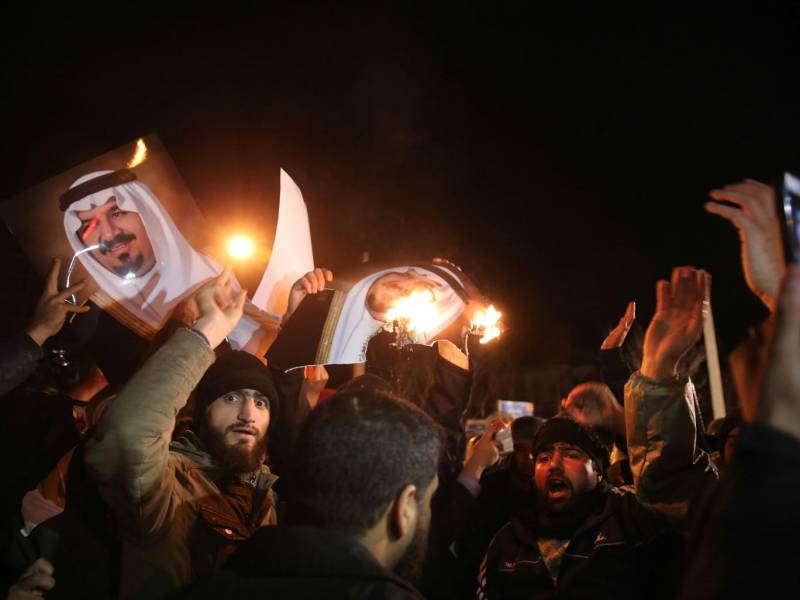The recent political developments in the Middle East have become the focus of international attention because of their possible impact on international politics and economy. The rise of political and ideological tension between Saudi Arabia led Arab monarchies/sheikdoms and Iran (Persia) has created deep concern not just in West Asia but in all Muslim countries as the Shia’a-Sunni sectarian confrontation has the potential of polarizing almost all countries with predominantly Muslim populations. There can be a fall out even for non-Muslim countries in case of growth in sectarian radicalization. There are some internal factors in the Middle East for the aforementioned political earthquake but the changing international situation is also responsible for shaping things up in the politics of West Asia.
Most of the present Arab states were carved out of the former Ottoman Turkish Empire in the political settlement after the end of First World War under the hegemony of western powers. But political map of this region got consolidated when in the bipolar world that emerged after the Second World War; the US entered the arena to fill the vacuum that was created by withdrawal of Britain from the region after the Second World War. The Baghdad Pact that became Central Treaty Organization (CENTO) when Iraq left it, was a western initiative for blocking the Soviet influence in the Middle East in the 1950s and 1960s. The U.S. led western powers tolerated Wahhabi extremism as it came handy in fighting communism. But Islamic Revolution in Iran drastically changed the situation in 1979 as after it the Shia’a Muslim population got radicalized on anti western lines. After the collapse of Soviet Union in 1991, the US resorted to the policy of regime change in the region to reverse balance of forces in her own favor. The project started with Iraq and later expanded to Libya, Syria and Egypt. The operation could succeed only in Egypt where a pro west army was able to overthrow the regime led by Muslim Brotherhood and replace it by a government led by General Sissi. But the regimes in Iraq, Syria and Libya were so deeply entrenched that the operation for their removal led to almost complete liquidation of the state systems. In Syria, Iran and Russia decided to physically intervene for foiling the western move for a regime change that has led to a full blown and devastating proxy war in that unfortunate country. Collapse of the state systems in these countries led to rise of the latest international terrorist entity, the so-called Islamic State (IS).
But there is another important aspect of the political situation developing in the Middle East that has not received proper attention. Regional powers such as Turkey and Iran are scrambling to fill the vacuum that is being created by the decline of US and western influence in the Middle East. Israel can’t play a direct role in this new political alignment because of wide spread hostility against it in the region.Turkey is politically and militarily supporting forces in Syria that are active for overthrowing the Bashar-ul-Assad regime. Turkey is openly supporting Arab monarchies and sheikdoms that feel threatened by the Islamic Republic of Iran. Recently Turkey has started establishing a military base in Qatar. AhmetDemirok, Turkish ambassador to Qatar said on this occasion, “Turkey and Qatar face common problems and we are both very concerned about the developments in the region and uncertain policies of other countries. At this critical time for the Middle East cooperation between us is vital”. Iran, that regards itself a successor state to Persian empire, has for the first time deployed its armies on large scale in Arab lands after the collapse of Persian empire in 7th century. Arab nationalist reaction against it is obvious. The apparently sectarian Sunni-Shia’a divide is basically a camouflage for Arab-Persian rivalry that can be traced back to pre Islamic period of history. Theocracies in Kingdom of Saudi Arabia (KSA) and Islamic Republic of Iran that are competing with each other for regional ascendency are both extremely oppressive state systems. Torture, execution and imprisonment of political opponents of the regime are a common practice in both the countries and the rulers abhor democracy. There is one important difference that can matter in deciding the fate of the rulers in these two countries. While Iran is looking at bright economic prospects with lifting of western economic and financial sanctions against her, Saudi Arabia is facing a financial crunch due to the crash in oil prices in recent years. Given the financial drain imposed on Saudi finances by her adventure in Yemen Saudi monarchy can run out of money.
Saudi Arabia has, in somewhat unilateral way, tried to recruit the governments of thirty-four predominantly Sunni Muslim countries in an “anti terrorist” alliance. It is supposed to be aimed against the so called IS, but war in Yemen and the rising tension between Iran and Saudi Arabia is bound to turn it into an anti Shia’a and anti Iran military alliance. Pakistani parliament adopted a correct stand on conflict in Yemen for refusing to take part in yet another foreign adventure. But Saudi Arabia, the overpowering financier, is still breathing on Pakistan’s neck. In its desperation it fails to realize that it can be suicidal for Pakistan as a state to join sectarian alliances. Pakistan needs to resist these pressures by all possible means. Pakistan also must tell both Iran and Saudi Arabia that it wouldn’t allow their proxy wars on its soil.
n The writer is a retired Senator and an analyst of regional affairs.






